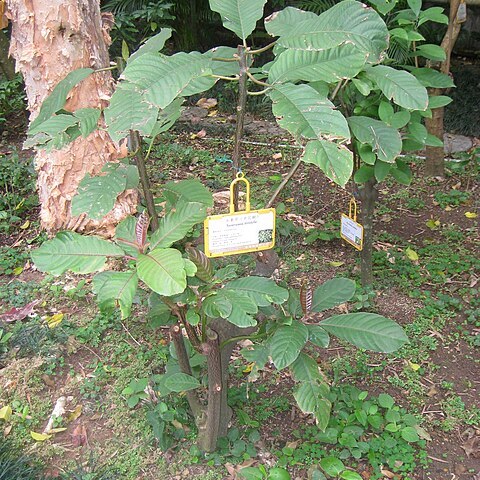Small trees or shrubs, 3-6(-12) m tall. Branchlets tomentose to glabrescent, with unguiculate hairs or subulate scales. Petiole tomentose or not, with unguiculate hairs or subulate scales; leaf blade obovate to broadly elliptic-obovate, 10-28 × 4-11 cm, papery, both surfaces sparsely pubescent with appressed setose to unguiculate hairs on midvein and lateral veins, with sparse and appressed setose hairs especially on veins adaxially, lateral veins 8-20 pairs, base cuneate to broadly so, margin setose-serrate, apex shortly acuminate to caudate. Inflorescences 1-4-fascicled, axillary, 1-5 cm, hairy and scaly, 1-3-flowered; bracts 2 or 3 at base of branches, ovate; bracteoles 2, nearly opposite at base of pedicel, 1-5 mm. Flowers pink to white, 0.7-1.6 cm in diam. Sepals broadly ovate to elliptic, 3-4 mm. Petals ovate, ca. 8 mm, recurved at apex. Stamens 25-34. Ovary ovoid to globose; styles 3 or 4(or 5), connate below middle. Fruit green to white to pale yellow, globose, 6-10 mm in diam. Fl. Mar-Jul, fr. Aug-Dec.
More
A shrub or small tree. It grows 3-6 m tall. The young growth has a rusty coloured covering. The leaves are narrowly oval and 11-17 cm long by 4-9 cm wide. They taper to the tip and are rounded at the base. The flowers are pink and change to white. The fruit are white and juicy. They are round and 6 mm across.


